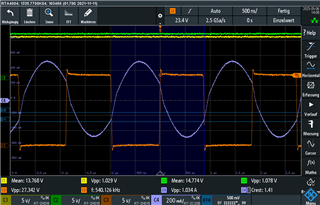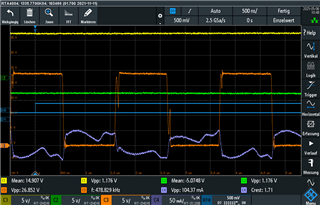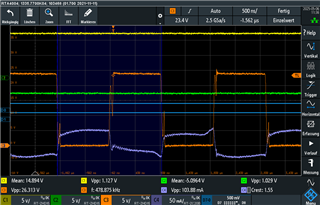Tool/software:
Hi team,
I have read several forum entries and application notes, but have not found a solution.
We have a circuit with FOUR transormers, secondary side LLC and voltage doubler (see schematic).
Transformer:

Under load (e. g. 100 R @ 20 V => 400 mW, also works with 200 R and so on...) we have the following wave forms:

Ch 1 : positive voltage at output 1 (100 R)
Ch 2 : positive voltage at output 2 (no load)
Ch 3 : primary side switching voltage
Ch 4: transformer secondary side (pin 3) current at output 1
As you see, the current looks good (I know, that fine tuning is still necessary, because the sinewave is cut off).
But in light load condition, we have the following wave form:

Ch 1 : positive voltage at output 1 (R = x kR)
Ch 2 : negative voltage at output 1 (R = x kR)
Ch 3 : primary side switching voltage
Ch 4: transformer secondary side (pin 3) current at output 1
I tried different switching frequencies (200 ... 1000 kHz), capacitors (2.2 ... 33 nF) ... In no case could a sinusoidal current be recognised.
Question 1: Do you have any idea what the problem could be? Do we need some kind of base load?
Question 2: As you can see on the first oscillogram, with a load of 100 R, the total output voltage (positive and negative together) drops by around 2 V if one output is loaded and the other three outputs are unloaded. Presumably no countermeasures can be taken here, correct?
Thanks in advance.
Best regards,
MS


